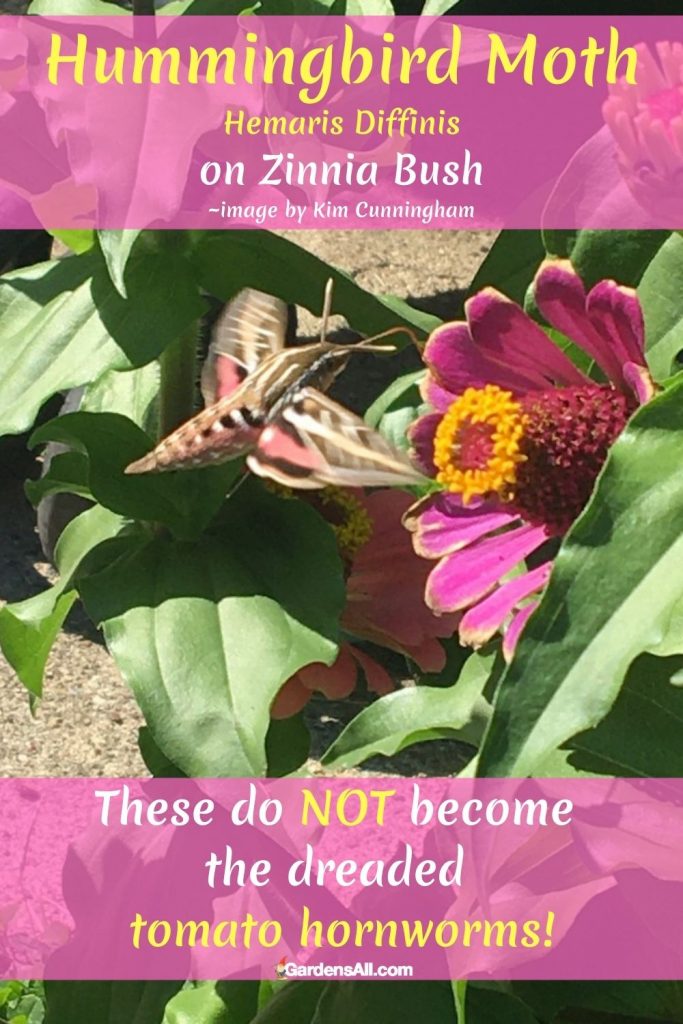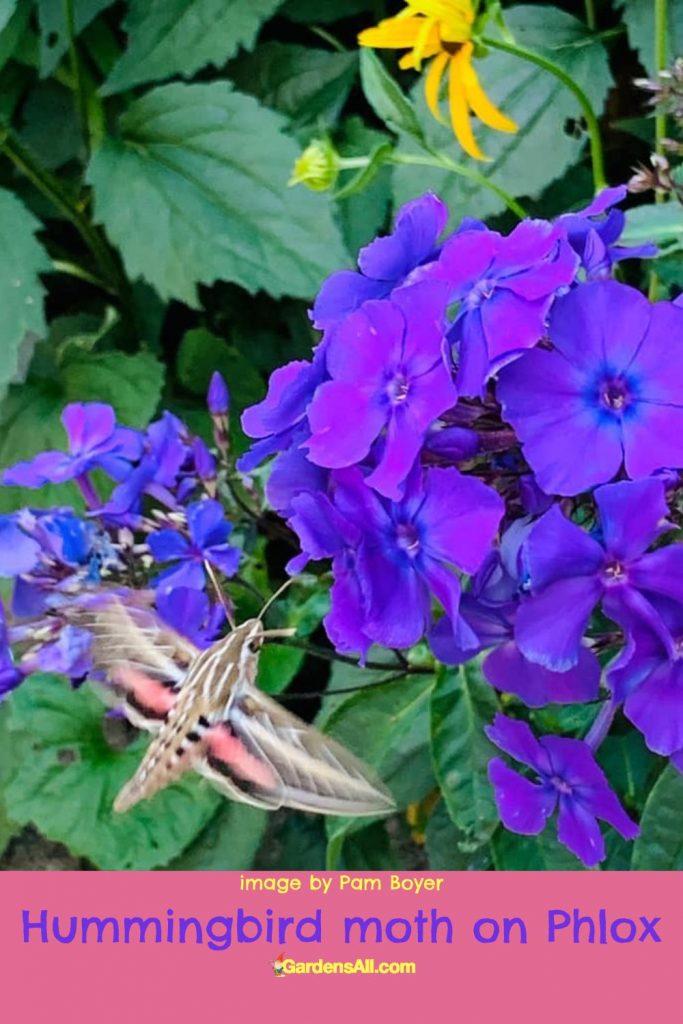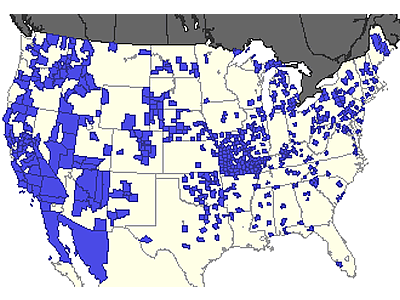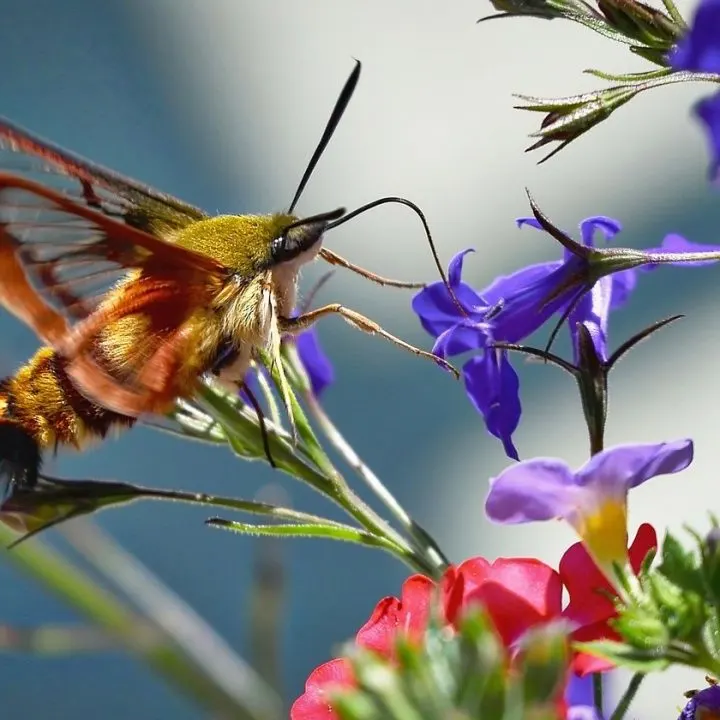There’s More Than One kind of Hornworm – Don’t Kill the Good Ones
Don’t kill that hummingbird moth caterpillar – it is NOT the tomato enemy you might think it is. In this article we ferret through the understandable confusion on this topic of hornworms and exactly which moths do — and do not — come from the dreaded tomato hornworm caterpillar (aka larva).
There’s much confusion and misinformation on which moths and which larva are of the tomato hornworm lineage. In fact, we had an erroneous image in this article, which we have since changed and cleared up thanks to assistance from GardensAll Facebook readers Marcia King, Rachel Rose and Jetsun Kane).
We learned that the caterpillars we were pulling off our tomato plants were actually the tobacco hornworm. The hornworms can look very similar to each other, but with subtle differences.
The bottom line is that both the tomato hornworm and the tobacco hornworm attack tomatoes and other nightshade plants, but the hummingbird moth larva does not.
A Tale of Two (or More) Caterpillars
We’re dealing with three (or more)different caterpillars. One is good for your garden, Hemaris spp., the others are not, especially if you’re growing tomatoes, potatoes, tobacco, or eggplant.
- Tobacco hornworms have diagonal line markings down the length of the sides of their bodies
- Tomato hornworms have V-shaped markings down the length of the sides of their bodies ,
- The hummingbird moth has dots but not lines or V’s.
Every year we go through this conversation that begins with people talking about hating to kill the tomato hornworms because they love the hummingbird moths. Or worse… killing the hummingbird moths so they won’t turn into — what some believe to be — the tomato hornworm.
A flood of comments ensue on what people do — or do not do — to these, but one thing in common is that many people in these conversation threads are convinced that the tomato hornworm turns into the hummingbird moth.
TRUTH: The tomato hornworm does not turn into a hummingbird moth.
Wrongly Accused and Condemned
The hummingbird moth caterpillar is often mistaken for the tomato hornworm. However, it’s a case of mistaken identification. The problem is that both are called hornworms because both are caterpillars with horns.
The devastating tomato hornworm and tobacco hornworm grow up to be a very different kind of moth than the hummingbird moth. The tomato hornworm DOES NOT become the much beloved pollinator known as the Hummingbird Moth.
FACT: The tomato hornworm DOES NOT become the hummingbird moth, Hemaris diffinis.
The Hummingbird Moth – Hemaris Diffinis – The GOOD Horned Caterpillar
The Hummingbird moth, Hemaris diffinis, has clear wings, giving it the common name of clearwing moth.
Hummingbird Moth Latin Name
Hemaris diffinis
Hummingbird Moth Common Names
- Clearwing Moth
- Hummingbird Moth

Hummingbird Moth Caterpillar — Hemaris spp. – Do NOT KILL THIS CATERPILLAR!!!
The hornworm caterpillar grows up to be the lovely hummingbird moth. This is NOT the tobacco or tomato hornworm, though it’s a common mistake to assume it is.
Please careful note the difference between the two caterpillars. You will see them side-by-side further below.

Hummingbird Moth – Hemaris Diffinis

The Dreaded Horned Caterpillars:
Tomato Hornworm Caterpillar – Manduca quinquemaculata, and also the Tobacco Hornworm Caterpillar
Neither of these nemesis to gardeners and farmers become the lovely hummingbird moth. The tomato hornworms and the tobacco hornworms do NOT grow up to become the hummingbird moth.
That’s a common myth and misunderstanding. When we first posted this, that’s what we thought too. But it’s not so. See the photo comparisons below.
The confusion is understandable, because both kinds of caterpillars are horned and look a lot alike. The good news is that with a little bit of study and memorization of details, you will be able to know the difference when you see them in the garden.
The tomato hornworms and the tobacco hornworms do NOT grow up to become the hummingbird moth.

The Dreaded Tomato Hornworm Caterpillar Becomes the 5 Spotted Hawk Moth, NOT the Hummingbird Moth!
The tomato hornworm caterpillar is a beautiful specimen of a moth, commonly called Five Spotted Hawk Moth. The botanical name for the tomato hornworm is Manduca quinquemaculata.
However, it’s former incarnation is an unwelcome garden tomato nemesis: the tomato hornworm. The 5 spotted hawk moth, or
What Do Tomato Hornworms Turn Into? The 5 Spotted Hawk Moth, Manduca quinquemaculata

Appearance of the Tomato Hornworm vs. the Hummingbird Caterpillar
Hummingbird Moth Caterpillar Description
- Green body
- Black dots across each side of body length
- Single tail horn has black tip
- Black tipped feet
- 5 pairs of primary feet
- Black underbelly
Tomato Hornworm Caterpillar Description
- Green Body
- White diagonal stripes & black dots surrounded by white circles
- Single tail horn has reddish tip
- Solid green feet
- 5 pairs of primary feet
- Green underbelly
Hummingbird Caterpillar Moth Vs. Tomato Hornworm
My simple memorization tip for these:
Simple spots are safe.
Diagonal stripes are diabolical.

What Does the Hummingbird Moth Caterpillar Look Like?
If you’re wondering what the hummingbird moth and caterpillar look like compared to the tomato hornworm and moth, you can see all four of those in the next photo.

More Hummingbird Moth Videos
Hummingbird Moth on Purple Flowered Azaleas
We love seeing these little guys pollinating in our yard and garden and thought you might as well. In fact several GardensAll community members have shared theirs as well, which you can find further below.
Hummingbird Moth — Contributed by Tamara Hoard
Here’s a video of a hummingbird moth shared by Planting for Retirement community member, Tamara Hoard.
Bee Balm and a Hummingbird Moth – contributed by Sabina Kelly
You can hear the humming of the wings of this busy little hummingbird moth engaged with the lovely magenta blossoms of the bee balm plant.
Flame Azaleas and Hummingbird Moth
See our fragrant orange flame azaleas article here. They’re one of our favorite azaleas for the wonderful aromas and vivid splash of orange in spring.
Pictures of Hummingbird Moths
Butterfly Bush and Hummingbird Moth
The butterfly bush is living up to its name by attracting a flurry of beautiful butterflies. Now, the Joe Pye Weed, a tall member of the milkweed clan, is blooming and vying for attention. In fact, it will need trimming after blooms, because it’s encroaching into our driveway.

Butterflies on Joe Pye Weed
We’ve seen the typical swallowtails like the tiger and the black on the Joe Pye Weed. And then we saw our first hummingbird moth… an oddball creature that made us look twice. It resembles a hummingbird with an antenna. Hmmmm. Turns out, it’s a moth aptly named the “hummingbird moth”.
Though we didn’t catch a photo of the hummingbird moth on the Joe Pye Weed, they and the butterflies love it. So we won’t trim the Joe Pye Weed until all blossoms are completely brown and dry because we’ve seen butterflies on the blossoms even after they’ve appeared to have lost all bloom.

Close up of Hummingbird Moth on Yellow Lilies
Kara Perkins shared this awesome photo of a hummingbird moth enjoying a patch of yellow lilies in her yard in Johannesburg, Michigan.


Host Plants That Attract Hummingbird Moths
Adult hummingbird moths can feed on nectar from most flowers. However, their the hummingbird moth larvae dine on more specific plants. So to attract more of these precious creatures, consider planting some of their “baby food”.
Plants for Hummingbird Moth Larva to Feed on
- Coralberry, Symphoricarpos orbiculatus
- Dogbane, Apocynum cannabinum
- Honeysuckle / dwarf honeysuckle, Diervilla lonicera
- Rose family plants such as:
- hawthorn
- cherries
- plums
- Viburnum / arrowwood viburnum, Viburnum dentatum
One reader asked this next question, followed by our answer:
Do Hummingbird Moth Caterpillars Strip Bushes of Leaves?
The larva (caterpillar) of the hummingbird moth isn’t typically reported as problematic by gardeners, as they don’t generally infest plants in large numbers, so chances are, if you’re having bushes stripped clean it’s not likely the Hemaris moth caterpillar.
The immature (larva) stages of hummingbird moths typically feed on beauty bush, cherry, cranberry, hawthorn, honeysuckle, snowberry and Viburnum.
You will find the tomato horn caterpillars on tomato and tobacco plants, but not the hummingbird moth caterpillars. Good host plants for hummingbird moths include arrowwood viburnum (Viburnum dentatum), coralberry (Symphoricarpos orbiculatus) and dwarf honeysuckle (Diervilla lonicera). The caterpillars are finicky eaters and are chemically compatible with these plants, shunning other species.
I avoid getting tomato horn worms by planting marigolds with the tomato plants. The strong smell keeps them away.
~Mary Crittenden, Manchester, CT
Great points, Mary! Thank you for sharing your experience and knowledge!
Plant marigolds with the tomato plants to avoid getting tomato hornworms.
F more on plants for attracting butterflies here.
Hummingbird Moth Pictures – Contributions from the Community




G. Coleman Alderson is an entrepreneur, land manager, investor, gardener, and author of the novel, Mountain Whispers: Days Without Sun. Coleman holds an MS from Penn State where his thesis centered on horticulture, park planning, design, and maintenance. He’s a member of the Phi Kappa Phi Honor Society and a licensed building contractor for 27 years. “But nothing surpasses my 40 years of lessons from the field and garden. And in the garden, as in life, it’s always interesting because those lessons never end!” Coleman Alderson

